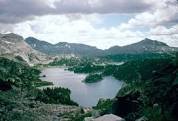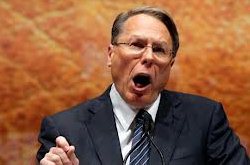The books I like to read more than any others are works of historical fiction set in and around World War II. Give me a new novel by David Downing, Joseph Kanon or Alan Furst, particularly Alan Furst, and everything else I need to do can go to Hell in a hand basket from the moment I crack the front cover until I finish every last word. I’m not saying that Marc Cirigliano is catching up to Furst in terms of style or output and in fact he’s writing about another war – World War I. But the book I just read, A Restless Spirit, The Last Months of Manfred von Richthofen, excited me and made me hope we will see more such treatments from a professor of art history who knows how to tell a good tale.
It wasn’t until I started reading A Restless Spirit that I remembered that we are, in fact, in the middle of the centenary of World War I. And while a few WWI memorial organizations and events have sprung up here and there, you can wander around Washington, D.C. and easily miss the WWI Memorial which was erected in a secluded spot on the edge of the Mall to honor DC residents who died in that war. Meanwhile, the National World War II monument sits between the Washington Monument and the Lincoln Memorial, and if that’s not enough, you can always go across the Potomac and visit the splendid Marine Corps – Iwo Jima memorial which commemorates the great Joe Rosenthal photo of Mt. Suribachi as the men of Company E, 2nd Battalion unfurled the flag.
We only fought for 18 months in World War I and our total casualties, dead and wounded, were slightly more than 50,000 men. We had that many casualties of Confederate and Union fighting men in four days at Gettysburg, and between the British Isles and the Empire, the cost in dead alone from World War I was almost 2 million men. That perhaps explains why the First World War holds just a sliver of the popular imagination when compared to World War II. But in many respects, World War I may have been more important in terms of shaping subsequent events. Both Hitler and Stalin were products of how their countries were ravaged between 1914 and 1918 and it’s doubtful that we would have had World War II if those regimes had not emerged from the chaos and destructiveness of what we now call the Great War.
The terrible cost of the war is brought home in vivid detail by Cirigliano’s descriptions of the air battles engaged in by Manfred von Richthofen, a.k.a the Red Baron, whose 80 combat victories not only made him the leading fighter ace of the war, but transformed public consciousness about the value of air technology both during and after the war. Richthofen, who came from Prussian nobility, was in military service from the day the war began until he died in April, 1918. He led by example, was fearless in combat and in one month alone was credited with more than 20 enemy kills.
The author nicely weaves portraits of air combat with the day-to-day soldiering duties on the ground; the text puts the reader onto the battlefield, behind the lines, whatever and wherever troops were encamped or making ready for the next attack or defense against the foe. But within this stressful and dangerous narrative another portrait emerges, that of Richthofen the outdoorsman and hunter who got away from the strains and harm of war by taking his Mauser into the woods.
I really liked the descriptions of Richthofen tramping through the forests around his native Schweidnitz and other spots. The author tells us that he writes to illustrate “cooperation, self-development, conflict resolution and peace as essential components of the human experience,” and he ties this all together in fulsome descriptions of Richthofen hunting elk and boar. As you can tell, I really enjoyed reading this work and you’ll like it too.


Recent Comments